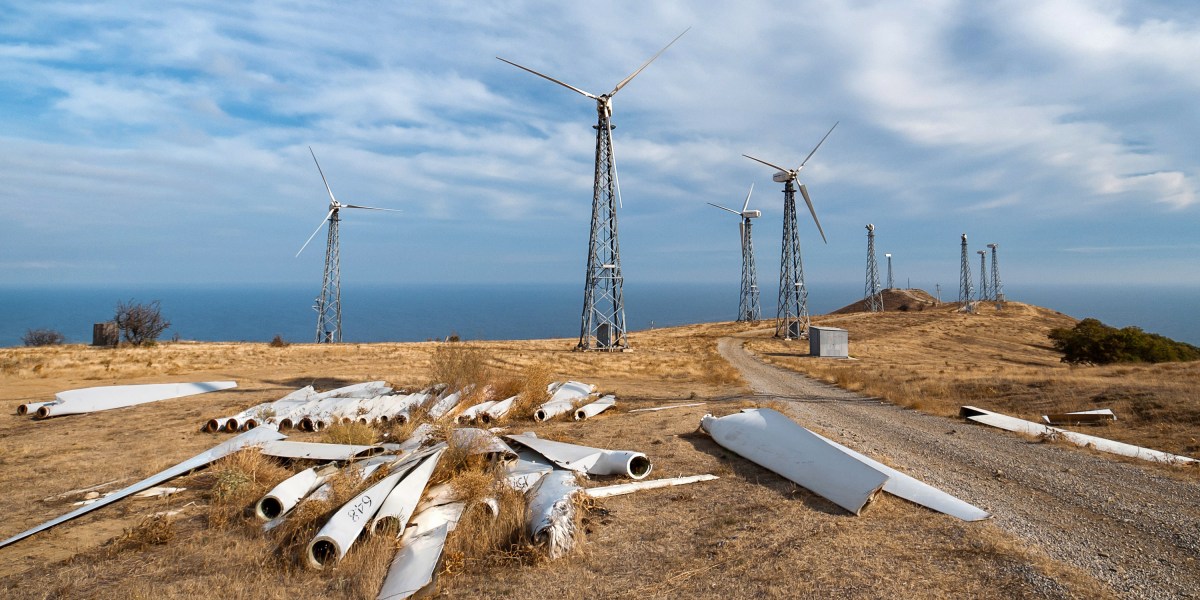How chemists could give new life to old wind turbine blades

This is the first time that researchers have been able to break down a reinforced epoxy material to recover both the plastic’s building blocks and the glass fibers inside without damaging either, Skrydstrup says.
While this process was able to chew up materials in the lab, it could be difficult to pull off at large enough scale to make a dent in the millions of tons of wind turbines coming out of service in the next few decades. “I think what’s important is that it shows a proof of concept that may inspire others to start looking in this direction,” Skrydstrup says.
Proof-of-concept research is key in chemical recycling, and this approach is “really exciting,” especially because the researchers demonstrated that it works on real waste, says Julie Rorrer, a professor at the University of Washington who studies chemical recycling.
The next stage, Rorrer says, would be figuring out how this could work on an industrial scale, or determining what would need to be adjusted so the process could be quick and efficient enough to be economical.
One of the possible roadblocks to commercial operation is that the catalyst used in the researchers’ recycling method relies on an expensive metal called ruthenium. The researchers were using a lot of this metal, and though it doesn’t get used up during the reaction, it could be difficult to recover and use again.
There may be other methods better suited to recycling turbine blades in industry. Skrydstrup’s lab has developed another process that also breaks down turbine blades, which was referenced in a press release earlier this year by the wind turbine maker Vestas.
Skrydstrup says that approach is a two-part process and might be more feasible to run at commercial scale, though the researchers declined to give specific details because they’re working to submit the results to scientific journals.
These are just two of the many approaches being developed in advanced recycling. There’s been a huge boom in research on ways to clean up all sorts of materials, from single-use plastics to wind turbines, Rorrer says, and for good reason: “There’s valuable things in trash.”


